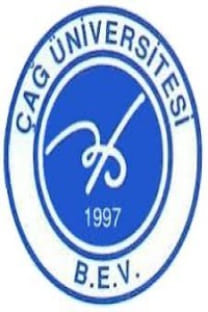TÜRK İMALAT SANAYİNDE TEKNOLOJİK DEĞİŞME YÖNÜNÜN BELİRLENMESİ
İmalat Sanayi, Cobb-Douglas Üretim Fonksiyonu, Eş Bütünleşme
-
___
- Avlan, Arzu; 2006; “Sources of Growth in Turkish Public and Private Manufacturing Sectors”; DEÜ İİBF Dergisi; Cilt:21; Sayı:1; ss.47– 69.
- Ansal, H.; 1992; “Sektörel gelişme Stratejileri”; 3.İzmir İktisat Kongresi; 4-7 Haziran; İzmir.
- Cobb, Charles W.; Douglas, Paul H.; 1928; “A Theory of Production”; The American Economic Review; Vol:18; No:1; March; ss.139-165.
- Çoban, Orhan; 2001; Türkiye Tekstil Endüstrisinin Üretim Yapısı ve Karşılaştırmalı Tezi);Cumhuriyet Üniversitesi SBE; Sivas. Gücü; (Yayınlanmamış Doktora
- Desai, Padma;1985; “Total Fasctor Productivity in Postwar Soviet Industry and its Branches”; Journal of Comparative Economics; Vol:9; No:1; ss.1–23.
- Dikmen, Nedim; 2005; “Cobb-Douglas üretim fonksiyonu:Ünye Çimento Uygulaması” İktisat İşletme ve Finans; 20.Yıl Ağustos; ss.106-113.
- Erol, İ.; (1991); “İşletmelerde Teknolojik Değişme; Strateji ve yapı Arasındaki İlişkiler”; MPM Verimlilik Dergisi; No:1991/2.
- Heathfiled, David F.; Wibe, Sören; 1987: An Introduction to Cost and Production Functions; MacMillan Education Publ.; London; UK.
- Hollandez S.; 1965; “The Sources of Increases Efficiency: A Study of DuPont Rayon Plants”; MIT Pres; Cambridge; Mass.
- Jones, Charles I.; 2003; “Growth, Capital Shares, and a New Perspective on Production http://elsa.berkeley.edu/~chad/alpha100.pdf erişim:06.02.2007
- Jones, Charles I.; 2005; “The Shape Of Productıon Functıons And The Dırectıon Of Technıcal Change”; The Quarterly Journal of Economics; May; ss.517-549.
- Katz, J.; 1980; “Domestic Technology Generation in LCD’s: A Review of Research Findings”; IDB/ECLA Research Programme on Science and Technology; Working Paper No.35; Buenos Aires.
- Katz, J.; 1987; “Domestic Technology Generation in LCD’s”; (Ed. J.M. Katz) Technology Generation in Latin American Manufacturing Industries; Macmillan; London.
- Kırım, Arman; 1990; Türkiye İmalat Sanayinde Teknolojik Değişim; TOBB Yayın No.145; Ankara.
- Michl, Thomas R.; 1999; “Biased Technical Change and the Aggregate Production Function”; International Review of Applied Economics; Vol. 13; No. 2; ss.193–206.
- Nakamura, Masao; 2005; “Technical Change in a Bubble Economy: Japanese Manufacturing Firms in the 1990s”; ss.1-31;
- http://www.eea-esem.com/files/papers/EEA-ESEM/2006/138/esem2006.pdf erişim:06.02.2007.
- OECD; 1981; North / South Technology Transfer, The Adjustment Ahead; OECD; Paris.
- Poiri, Dale J.; 1975; “On the Use of Cobb-Douglass Splines”; International Economic Review, Vol:16; No:3; October; ss.733-744.
- Reder, M.W.;1943; “An Alternative Interpretation of Cobb Douglas Function”; Econometrica; Vol: 11; No:3/4; Jul-October; ss.259–264.
- Salter, W.; 1966; Productivity and Technical Change; Cambridge University Pres; Cambridge.
- Saraçoğlu, Bedriye; Suiçmez, Halit; 2006; “Türkiye İmalat Sanayinde Verimlilik, Teknolojik Gelişme, Yapısal Özellikler ve 2001 Krizi Sonrası http://www.tek.org.tr/dosyalar/SARACOGLU-SUICMEZ.doc erişim:28.02.2007. Reel Değişimler–1980-2005”,
- Saygılı, Şeref ve Diğerleri; 2005; Türkiye Ekonomisinde Sermaye Birikimi, Verimlilik ve Büyüme:1972-2003; DPT Yay.; No:2286; Ankara.
- Solow, R.M.; 1957; “Technical Change and The Aggregate Production Function”; Review of Economics and Statistics; August.
- Tekelioğlu, Muammer; 1993; Sanayi Yıllığı-1993; Türkiye Kalkınma Bankası; Ankara.
- Tiryakioğlu, Murad; 2002; “Yenilikçi Rekabet Stratejileri Açısından Türk İmalat Sanayii Ve Yenilikçilik” http://iibf.ogu.edu.tr/kongre/bildiriler/12-02.pdf erişim:28.02.2007
- Tuncer, İsmail; Özuğurlu, Yasemin; 2004; “Türkiye Ekonomisinde Büyüme ve Sektörel Üretkenlik Analizleri: Bölgesel Karşılaştırmalar 1980- 2000”; Türkiye Ekonomi Kurumu Tartışma Metni; No: 2004/24; Aralık; ss.1-86, http://www.tek.org.tr erişim:06.02.2007.
- TUİK; Türkiye İstatistik Yıllığı; TUİK Yay.; Çeşitli Yıllar.
- Walters, A.A.; 1963, “Production and Cost Fnction: An Econometric Survey”, Econometrica, Vol:31, No:1/2(Jan.-Apr.,), ss.1-66.
- ISSN: 1304-8392
- Yayın Aralığı: Yılda 2 Sayı
- Başlangıç: 2004
- Yayıncı: Çağ Üniversitesi
ORTA VE KÜÇÜK ÖLÇEKLİ PERAKENDE MAĞAZALARINDA İNSAN KAYNAKLARI EĞİTİMİ
FUTBOL ENDÜSTRİSİ: SEYİRCİ SAYISI ve TAKIMLARIN FORMA RENKLERİ
Türkay DERELİ, Adil BAYKASOĞLU, Alptekin DURMUŞOĞLU, Zeynep D UNUTMAZ, A İhsan SÖNMEZ
ORTA VE KÜÇÜK ÖLÇEKLİ PERAKENDE MAĞAZALARINDA İNSAN KAYNAKLARI EĞİTİMİ
GELİŞMEKTE OLAN ÜLKELERDE SERMAYE HAREKETLERİ
TÜRK İMALAT SANAYİNDE TEKNOLOJİK DEĞİŞME YÖNÜNÜN BELİRLENMESİ
Abdulvahap ÖZCAN, Nihat BATMAZ
POLITICS OF AMERICAN AID: THE CASE OF PAKISTAN
Mansoor AKBAR KUNDİ, Safia BANO
FUTBOL ENDÜSTRİSİ: SEYİRCİ SAYISI ve TAKIMLARIN FORMA RENKLERİ
Türkay DERELİ, Adil BAYKASOĞLU, Alptekin DURMUŞOĞLU, Zeynep D UNUTMAZ, A İhsan SÖNMEZ
LOOKING FOR A LEARNER-BASED WRITING COURSE SYLLABUS? TRY REPGRID
